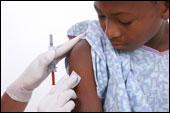 Featured Links
Featured Links
Related Policy Centers
Related UI Researchers
Publications on Health/Healthcare
Awareness and Access to Care for Children and Youth with Epilepsy: Needs Assessment -- Final Report (Research Report)Author(s): Barbara A. OrmondThis needs assessment, conducted for District of Columbia Department of Health (DC-DOH), presents findings from a literature review, analyses of Medicaid enrollment and hospital discharge data, interviews with key informants, a survey of school nurses, and findings from focus groups with young adults with epilepsy and caretakers of young adults with epilepsy in DC. It suggests changes within the health services delivery system for children and youth with epilepsy related to the following goals identified by DC-DOH: early detection, diagnosis, and treatment; improved access to medical homes; reduced stigma; reduced language and cultural barriers; and sustained systems change.
Caring for the Uninsured in New York (Research Report)Author(s): Randall R. Bovbjerg,
Stan Dorn,
Jack Hadley,
John Holahan,
Dawn M. MillerAbout 2.5 million New Yorkers were uninsured in 2005, and medical providers that serve them incurred some $2.8 billion in uncompensated care. Two separate analyses in this report agreed on this estimate, one using provider cost reports and the other household survey data. Budgetary and other sources showed that state, local, and federal governments supplied about $3.5 billion in revenues that offset these costs, through a complex mix of programs. If these uninsured people had all had insurance for the full year, their projected medical spending would have been higher by about $4.1 billion. Any insurance expansion program would incur these and additional costs as well.
Health Care Providers Spent $2.8 Billion Caring for New York State's Uninsured in 2005 (Press Release)Author(s): The Urban InstituteNew York State's medical providers spent an estimated $2.8 billion last year providing care to 2.5 million uninsured New Yorkers, says a new analysis from the Urban Institute.
| Posted: October 20, 2006 | Availability: HTML |
A Profile of Young Children in the Los Angeles Healthy Kids Program: Who Are They and What Are Their Experiences on the Program? (Research Report)Author(s): Embry M. Howell,
Lisa Dubay,
Genevieve M. Kenney,
Louise Palmer,
Ian Hill,
Moira Inkelas,
Martha KovacThis report summarizes the findings from a survey of parents of Healthy Kids enrollees aged 1 to 5 in Los Angeles County. The Los Angeles Healthy Kids program was implemented in July 2003 and provides insurance coverage to low income, uninsured children, who are ineligible for Medi-Cal or Healthy Families. This report is one of a series evaluating the Healthy Kids program in L.A. and analyses the demographic characteristics of enrolled children, their health status, health care access and use experiences, parental impressions of the enrollment and renewal processes, among other topics. One year from now, a second survey report will provide results from the longitudinal follow-up with the same parents and will assess the impact of the Healthy Kids program in L.A.
Effects of Recent Employment Changes and Premium Increases on Adult Insurance Coverage (Article)Author(s): Jack HadleyJack Hadley uses data from 1997, 1999 and 2002 National Surveys of America's Families to estimate a statistical model of the relationships between employment loss, insurance costs, and insurance coverage of non-elderly adults. Using a 2000 to 2003 study period, simulations based on the model suggest that the large increase in private insurance premiums (about 33 percent in constant dollars) was responsible for 3.1 of the 3.4 percentage point drop in private insurance coverage. Employment loss has a substantial impact on the coverage of affected individuals, but its impact on aggregate coverage is relatively small. Expanded public coverage absorbed only about one-quarter of the loss of private coverage. Hadley maintains that controlling insurance (and medical) cost inflation is critical to expanding insurance coverage, even after the employment rate recovers. (Medical Care Research and Review 63(4): 447-476, 2006)
| Posted: October 13, 2006 | Availability: HTML |

